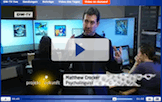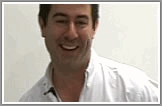The overarching goal of my research is use high-resolution experimental methods to develop computational theories and models of how people map the linguistic signal into meaning.
My current research is concerned with the extent to which human language processing has adapted so as to make optimal use of both linguistic and non-linguistic information. I am particularly interested in the use of probabilistic and connectionist techniques for modelling comprehension processes. Such frameworks have proven ideal for reasoning about optimal behavior, expressing the kinds of preferences that people accrue as a result of their linguistic experience, as well as modeling the influence of the immediate linguistic and non-linguistic context. Topics I’m actively working on include:
• The interaction of language and vision in situated language understanding
• Connectionist models of language comprehension and visual attention
• Utterance-mediated gaze and joint attention in virtual environments
• Psycholinguistics in embodied cognition
• Eye-tracking investigation of written language comprehension
• Probabilistic models of lexical, syntactic and semantic processing
In past research with Patrick Sturt and Martin Pickering (Edinburgh), I have also worked on the problem of syntactic reanalysis. While theories of syntactic processing typically focus on the problem of initial disambiguation strategies, it is also necessary to understand the mechanisms used to recover from erroneous decisions, or 'reanalyse'. This research has developed a monotonic model of parsing and reanalysis, wherein certain revision operations can be carried out straightforwardly, while other are predicted to lead to conscious processing difficulty. In addtion to explaining a range of existing evidence, we have also conducted new experiments which confirm the model, and identify a clear distinction between 'easy' reanalysis and conscious 'garden path' constructions.

